new york bridges
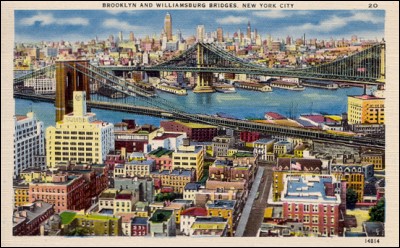
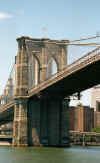
|
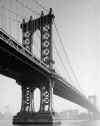
|
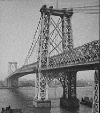
|

|

|
| 001-Brooklyn Bridge | 002-Manhattan Bridge | 003-Williamsburg Bridge | 004-George Washington Bridge |
005-Hel |
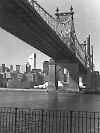
|

|

|

|

|
| 006-Queensboro Bridge | 007-Roosevelt Island Bridge | 008-Throgs Neck Bridge | 009-Triborough Bridge | 010-Verrazano Bridge |
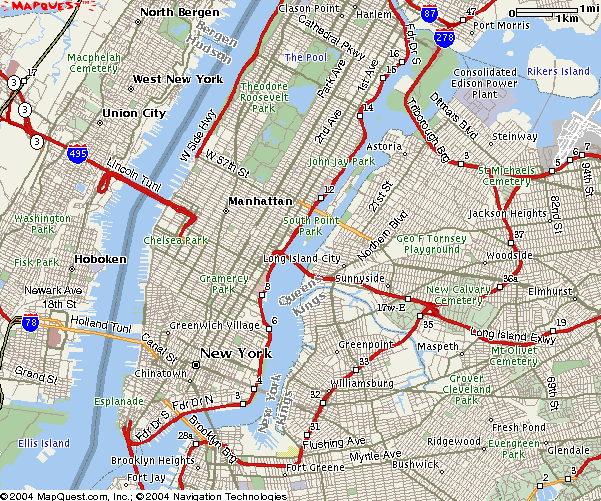
| New York's harbor
and multiple waterways are what once made it the center of trade, but
today they make it a city of bridges and tunnels. Over 2,000 of them
provide uninterrupted vehicular movement throughout the region. Several
agencies claim jurisdiction over this network of crossings including the
Port Authority of New York and New Jersey, the Metropolitan
Transportation Authority (MTA), DOT, New York State Department of
Transportation, New York City Department of Environmental Protection
(DEP), Amtrak and the New York City Department of Parks. Nearly all of the city's major bridges and several of its tunnels, have broken or set records. The Holland Tunnel was the world's first vehicular tunnel when it opened in 1927. The George Washington Bridge and Verrazano Narrows Bridge were the world's longest suspension bridges when opened in 1931 and 1964 respectively. Bridges New York's crossings date back to 1693, when its first bridge, known as the King's Bridge, was constructed over Spuyten Duyvil Creek between Manhattan and the Bronx. The bridge, composed of stone abutments and a timber deck, was demolished in 1917. The oldest crossing still standing is Highbridge which connects Manhattan to the Bronx over the Harlem River. This bridge was built to carry water to the city as part of the Croton Aqueduct system. Ten bridges and 1 tunnel serving the city have been awarded some level of landmark status. The Holland Tunnel was designated a National Historic Landmark in 1993 in recognition of its pioneering role as the first mechanically ventilated vehicular underwater tunnel, operating since 1927. The George Washington, Highbridge, Hell Gate, Queensboro, Brooklyn, Manhattan, Macombs Dam, Carroll Street, University Heights and Washington bridges have all received landmark status as well. New York features bridges of all lengths and types, carrying everything from cars, trucks and subway trains to pedestrians and bicycles. The George Washington Bridge, Verrazano Narrows Bridge and the Brooklyn Bridge are considered among the most beautiful in the world. Others are more well known for their functional importance such as the Williamsburg Bridge which has 2 heavy rail transit tracks, 8 traffic lanes and a pedestrian sidewalk. |
|
| East
River Name Opening year Length Brooklyn Bridge 1883 1825 m Manhattan Bridge 1909 2089.4 m Williamsburg Bridge 1903 2227.48 m Queensboro Bridge 1909 1135.08 m Roosevelt Island Bridge 1955 876.91 m Triborough Bridge 1936 1569.72 m Hell Gate Bridge 1916 5181.6 m Rikers Island Bridge 1966 1280.16 m Bronx Whitestone Bridge 1939 1149.10 m Throgs Neck Bridge 1961 886.97 m New York Bay Verrazano-Narrows Bridge 1964 1298 m I-278 Newtown Creek Kosciusko Bridge 1939 Pulaski Bridge 1954 J. J. Byrne Memorial Bridge Grand Street Bridge Metropolitan Avenue Bridge Greenpoint Avenue Bridge |
Harlem River Name Opening year Length Ward's Island Bridge 1951 285.6m Triborough Bridge 1936 1569.72 m Willis Avenue Bridge 1901 Third Avenue Bridge 1898 Park Avenue Bridge 1954 Madison Avenue Bridge 145th Street Bridge 1905 Macombs Dam Bridge 1895 774 m High Bridge 1848 600 m Alexander Hamilton Bridge 1963 724 m I-95 Washington Bridge 1888 723.9 m University Heights Bridge 1908 82 m Broadway Bridge 1962 Henry Hudson Bridge 1936 673 m Sputyen Duyvil Bridge Hudson River George Washington Bridge 1931 1450.85 m |